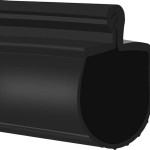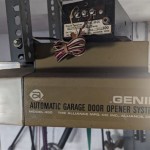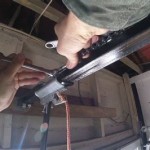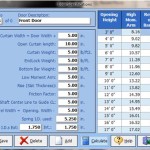Garage Door Opener: Belt Drive vs. Screw Drive
The garage door opener is a critical component of modern residential and commercial properties, providing convenience and security by automating the opening and closing of garage doors. Among the various types of garage door openers, belt drive and screw drive models represent two popular options, each characterized by distinct mechanisms, performance attributes, and suitability for different applications. Understanding the nuances between these two drive systems is essential for informed decision-making when selecting a garage door opener.
This article offers a detailed comparison of belt drive and screw drive garage door openers, exploring their operational principles, advantages, disadvantages, factors to consider during selection, and maintenance requirements. This comparison will provide a comprehensive understanding to assist in choosing the optimal opener for specific needs.
Understanding Belt Drive Garage Door Openers
Belt drive garage door openers utilize a reinforced belt, typically made of steel-reinforced rubber or polyurethane, to move the garage door along a track. The motor turns a sprocket, which in turn drives the belt, translating rotational motion into linear motion to lift and lower the door. This design is known for its smooth and quiet operation, making it a preferred choice for homeowners seeking to minimize noise disturbance.
The belt itself is attached to a trolley, which rides along a rail extending from the motor to the garage door. As the belt moves, it pulls or pushes the trolley, effectively opening or closing the door. The tension of the belt is a critical factor for optimal performance and longevity; it requires periodic adjustments to prevent slippage or excessive wear.
Belt drive systems often incorporate sensors, such as safety sensors mounted near the floor, that detect obstructions. If an obstruction is detected while the door is closing, the system automatically reverses direction to prevent damage or injury. This is a critical safety feature mandated by regulations and is standard on most modern garage door openers.
The quiet operation is a significant advantage, particularly for garages attached to living spaces or located beneath bedrooms. The smooth movement of the belt minimizes vibrations and noise transmission, contributing to a more comfortable living environment within the home. However, the belt drive system's complexity and use of specialized components can translate to a higher initial cost compared to other types of openers, such as chain drive models.
Maintenance for belt drive openers generally involves periodic inspection of the belt's condition, ensuring proper tension, and lubricating moving parts. Regularly checking the safety sensors and performing operational tests are also crucial for maintaining the system's reliability and safety.
Understanding Screw Drive Garage Door Openers
Screw drive garage door openers rely on a threaded steel rod, or screw, to move the garage door. The motor turns the screw, and a trolley rides along the screw's threads, converting rotational motion into linear motion to raise or lower the door. This mechanism is characterized by its relative simplicity and robust design, offering durability and minimal maintenance requirements compared to some other types of openers. The screw drive system, in principle, is a direct system; the motor turns the screw which directly moves the trolley.
The trolley, which connects to the garage door, engages with the screw's threads. As the screw rotates, the trolley is either pushed away from the motor (opening the door) or pulled toward the motor (closing the door). The screw's length determines the maximum travel distance of the door, ensuring complete opening and closing.
Screw drive openers are known for their strength and ability to handle heavy garage doors, including those made of solid wood or insulated materials. The direct-drive mechanism provides substantial lifting power, making them suitable for applications where durability and torque are paramount. However, the direct coupling of the motor to the garage door can sometimes result in slightly noisier operation compared to belt drive systems. The metal-on-metal contact during the screw's rotation can generate audible noise.
Like belt drive systems, screw drive openers also incorporate safety sensors and other safety features to detect obstructions and prevent accidents. These features enhance the overall safety and reliability of the system. Some models may also offer advanced features, such as battery backup and smartphone connectivity, providing additional convenience and control.
Maintenance for screw drive openers typically involves lubricating the screw with a specialized grease designed to reduce friction and prevent wear. Regular inspection of the trolley and the screw for any signs of damage or wear is also recommended. The simplicity of the screw drive mechanism often translates to fewer maintenance requirements and longer service life compared to other types of openers.
Key Points of Comparison: Belt Drive vs. Screw Drive
The selection between belt drive and screw drive garage door openers depends on several factors, including noise sensitivity, budget, door weight, and personal preferences. Here's a detailed comparison of the key differences:
Noise Level: A Significant Differentiator
Belt drive openers are significantly quieter than screw drive openers. The rubber or polyurethane belt absorbs vibrations and reduces noise transmission. This is crucial for garages near living spaces. Screw drive openers, with their direct metal-on-metal contact between the screw and the trolley, tend to be noisier. While lubrication can mitigate some of the noise, it remains a consideration for noise-sensitive environments.
Maintenance Requirements: Balancing Simplicity and Lubrication
Screw drive openers are generally considered to have lower maintenance requirements due to their simpler design. The primary maintenance task is lubricating the screw. Belt drive openers require periodic inspection and adjustment of the belt tension, along with lubrication of moving parts. While the maintenance tasks are not excessively complex, they may be more frequent compared to screw drive models.
Lifting Power: Matching the Opener to the Door's Weight
Screw drive openers excel in lifting heavy garage doors. They provide substantial torque and strength. Belt drive openers are suitable for most standard garage doors, but may not be the optimal choice for exceptionally heavy or oversized doors. The lifting capacity of a garage door opener is typically measured in horsepower (HP), with higher HP ratings indicating greater lifting capability.
Cost: Balancing Initial Investment and Long-Term Value
Belt drive openers generally have a higher initial cost compared to screw drive openers. The increased cost reflects the more complex design and the use of specialized components. Screw drive openers offer a more budget-friendly option, providing a balance between performance and affordability. However, long-term costs, including maintenance and potential repairs, should also be considered when evaluating the overall value of each type of opener.
Durability and Longevity: Expected Lifespan and Reliability
Both belt drive and screw drive openers can provide reliable performance and long service life with proper maintenance. Screw drive openers, with their robust design and fewer moving parts, may be perceived as more durable in some situations. However, high-quality belt drive systems are also engineered for longevity and can withstand demanding operating conditions. The material and construction quality play a significant role in determining the overall durability of both types of openers.
In addition to these key points, it's also important to consider other factors such as the availability of spare parts, warranty coverage, and the reputation of the manufacturer. Choosing a reputable brand with a proven track record of quality and customer service can ensure a positive ownership experience.
Ultimately, the best choice between belt drive and screw drive garage door openers depends on individual needs and priorities. Carefully evaluating these factors will assist in making an informed decision that ensures the selection of an appropriate and long-lasting garage door opener.

The Ups And Downs Of Chain Screw Belt Garage Door Openers A Better

The Ups And Downs Of Chain Screw Belt Garage Door Openers A Better

Belt Drive Vs Screw Garage Door Openers

Garage Door Openers Screw Vs Belt Chain Residential Opener Options Doormatic Doors

The Ups And Downs Of Chain Screw Belt Garage Door Openers A Better
Belt Drive Vs Chain Garage Door Opener 2024 Guide

Benefits Of Belt Drive Garage Door Openers

Chain Vs Belt Drive Garage Door Openers Which Is Right For You

A Guide To The 4 Main Types Of Garage Door Openers

Chain Vs Belt Screw Drive Garage Door Openers
See Also







